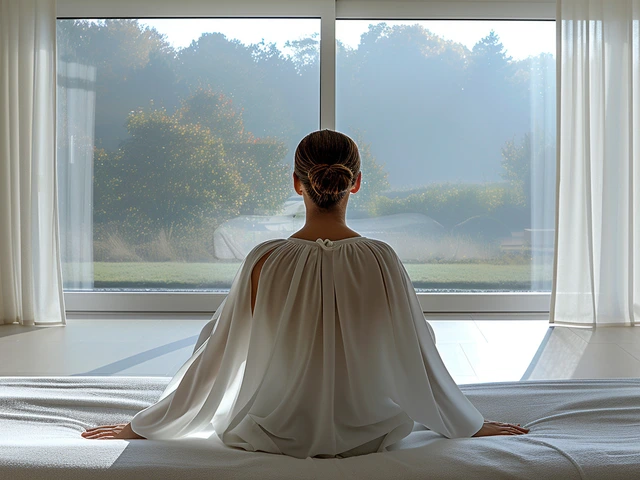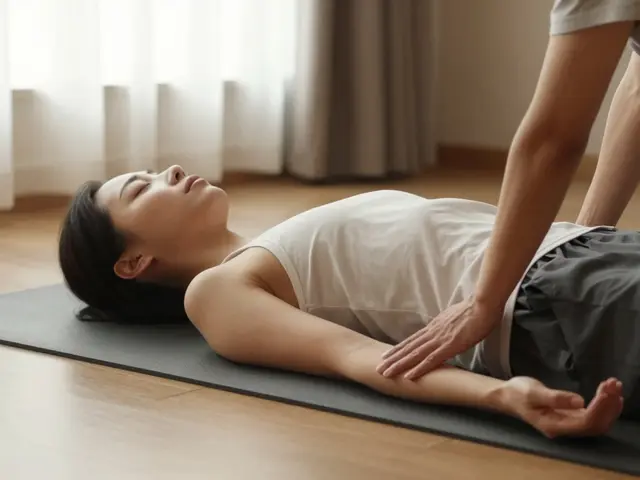Discover the Ultimate Self-Care Ritual: The Benefits of Hammam

The art of self-care has taken many forms over the centuries, but few are as comprehensive and time-tested as the Hammam. Originating in the Middle East and popularized in various cultures, this traditional steam bath offers a unique blend of physical and mental benefits.
Let’s delve into the Hammam experience, exploring how it’s much more than just a bath— it’s a ritual that caters to both body and soul.
- A Brief History of the Hammam
- Physical Benefits
- Mental Health Benefits
- Modern Implementations
- Tips for Your Own Hammam Experience
A Brief History of the Hammam
The Hammam, a term derived from the Arabic word meaning 'spreading the heat', has roots stretching back thousands of years. Originating in the Roman bathhouses, the concept spread across the Mediterranean, evolving and adapting within various cultures. As the Roman Empire expanded, so did their bathhouse architecture, eventually influencing the Muslim world post the 7th century.
One can trace the Hammam's history to the Byzantine Empire, where public baths were both a social hub and a place for ritual purification. However, it found its pinnacle during the Ottoman Empire. Ottoman sultans, recognizing the Hammam's significance for both hygiene and social interaction, built grand, intricately designed public baths across their territories. Istanbul's iconic Çemberlitaş Hamamı, established in 1584 by the famed architect Mimar Sinan, is a prime example.
The Hammam's significance transcended mere cleanliness. In Islamic culture, it became a ritualistic space where purification practices were performed before prayers. This spiritual aspect extended into social realms, with Hammams acting as venues for community gatherings, bridal preparations, and even business dealings. The architectural magnificence of these bathhouses often reflected their importance. Intricate mosaics, domed ceilings with star-shaped vents, and marble interiors were commonplace, each design element serving a specific function—be it aesthetic beauty or utility.
According to historian Bruce Kraig, "The Hammam was more than a place to get clean. It was a social institution. People of all classes would gather, talk, and bond in a way that strengthened the community."As these facilities became a staple of urban life, variations emerged. In Morocco, for instance, the Hammam took on unique features influenced by Berber traditions, contrasting the more elaborate Turkish baths. The essence, however, remained unchanged—a communal space dedicated to relaxation, purification, and socialization.
The 20th century saw a decline in the traditional use of Hammams, attributed to the advent of modern plumbing and private bathrooms. Nonetheless, their cultural and historical significance never faded. Today, many have experienced a resurgence, blending ancient practices with modern wellness trends. Contemporary spas worldwide now incorporate Hammam-inspired treatments, allowing a new generation to experience the timeless benefits of this age-old practice.
Understanding this rich history is crucial in appreciating why the Hammam stands as the ultimate self-care ritual. It’s a tradition steeped in centuries of cultural, social, and spiritual importance, offering a sanctuary where one's physical and mental well-being can be nurtured.
Physical Benefits
When we talk about the physical benefits of a Hammam, we're diving into a tradition that has stood the test of time. One of the most immediate advantages you'll notice is the comprehensive cleansing. The Hammam ritual involves a series of steam treatments and exfoliating processes that effectively remove toxins from the skin. This thorough cleansing not only leaves your skin feeling rejuvenated but also opens up your pores, allowing for better absorption of skin products you might use afterward.
Another significant benefit is improved circulation. The heat from the steam room causes your blood vessels to expand, enhancing blood flow. This can be particularly beneficial for people with circulation issues. Over time, better circulation can contribute to overall cardiovascular health. Some studies have even suggested that frequent visits to heated environments like Hammams can reduce the risk of heart disease.
Promoting muscle relaxation is another fantastic perk. After a long week filled with stress and physical exertion, nothing quite compares to the relief you get from steam. The heat penetrates deep into muscle tissues, alleviating tension and soreness. Athletes often frequent steam baths for this very reason.
Weight loss might not be the first thing that comes to mind when thinking about Hammams, but it’s another possible benefit. While sitting in a steam room isn’t a substitute for hitting the gym, it can contribute to a minor increase in calorie expenditure. The elevated heart rate and sweating can help burn some extra calories, aiding a weight loss regimen.
Respiratory benefits shouldn't be overlooked either. Many people find that spending time in a steam room helps clear their airways and improve their breathing. The warm, moist air can be particularly useful for those dealing with conditions like bronchitis or sinusitis.
One user, Sophie Palmer, shared her experience in a wellness blog, stating, "After incorporating Hammam sessions into my routine, I noticed a significant difference in my skin texture and overall vitality. It’s like hitting a reset button for my body every week."
Below is a table summarizing some of the key physical benefits:
| Benefit | Description |
|---|---|
| Cleansing | Removes toxins and dead skin cells |
| Improved Circulation | Enhances blood flow and cardiovascular health |
| Muscle Relaxation | Relieves tension and soreness |
| Weight Loss | Helps burn extra calories |
| Respiratory Benefits | Clears airways and improves breathing |
To sum up, the **physical benefits** of a Hammam are numerous and varied, making it a standout choice for those seeking comprehensive self-care routines. Whether you're aiming for better skin, improved circulation, or muscle relaxation, this ancient practice can offer invaluable support for your wellness journey.

Mental Health Benefits
While the Hammam is often celebrated for its physical benefits, its impact on mental health cannot be ignored. The calming environment, combined with the therapeutic properties of steam, creates a sanctuary for the mind. Stepping into a Hammam can feel like stepping into another world—one that is far removed from the stresses of daily life.
Scientific studies have shown that regular steam baths can lower cortisol levels, the hormone responsible for stress. When your body is enveloped in warm steam, it triggers a relaxation response that helps to decrease anxiety and promote a feeling of well-being. This is why many people report feeling significantly more relaxed and less anxious after a Hammam session.
Another significant benefit is the improvement in sleep quality. Insomnia and poor sleep can be a result of elevated stress and anxiety. The Hammam’s tranquil environment and the relaxation it promotes can make it easier to fall asleep and stay asleep. This is invaluable as quality sleep is essential for maintaining a positive mental state and overall well-being.
Social interaction within the Hammam can also play a part in mental health. In many cultures, the Hammam is not just a place for cleansing but a social hub where people catch up with friends and family. This social aspect can alleviate feelings of loneliness and isolation, which are often precursors to depression and anxiety.
"The Hammam offers a unique mix of solitude and social interaction that can be incredibly therapeutic," says Dr. Sarah Johnson, a wellness expert.
Moreover, the rituals within the Hammam, such as exfoliation and massage, provide a form of mindful practice. Engaging in these rituals allows you to focus on the present moment, which can be a powerful tool against rumination and negative thought patterns. This aspect of Hammam makes it a holistic approach to mental health, addressing both the mind and body simultaneously.
The aromatic scents often used within the steam, such as eucalyptus and lavender, have their own set of benefits. These essential oils are known for their calming and relaxing properties. The olfactory stimulation adds another layer of mental wellness to the Hammam experience.
Boosting Overall Mood
One of the more immediate and noticeable benefits is the boost in mood. The combination of heat, steam, and relaxation often results in the release of endorphins, the body’s natural 'feel-good' chemicals. This endorphin release can lead to an uplifted mood and a more positive outlook on life.
Additionally, the Hammam can be a place for reflection and introspection. Away from digital distractions and daily responsibilities, the quietness of the Hammam offers a unique opportunity to tune into yourself and practice self-awareness. This time for mindfulness can lead to a greater understanding of one's emotions and thoughts, which is crucial for mental health.
Modern Implementations
The journey of the Hammam through time has seen it evolve in numerous ways, adapting to contemporary lifestyles while retaining its core essence. Presently, the modern wellness industry has embraced this age-old tradition, integrating it into spas, wellness centers, and even home setups, making it accessible to a wider audience.
One of the most popular ways the Hammam has found its place in modern times is through luxurious spa experiences. These establishments offer a mix of traditional and modern amenities, ensuring that guests can immerse themselves in self-care rituals that rejuvenate the body and mind. The process often begins in a steam room where the heat helps open the pores and prepares the skin for exfoliation. Here, the humid, aromatic air infused with essential oils aids in relaxation and respiratory health.
Following the steam, clients often undergo a vigorous body scrub performed by a therapist. The scrubbing mitt, known as a 'kessa', is used to exfoliate dead skin cells, leaving the skin feeling incredibly soft and smooth. This part of the ritual detoxifies the skin, boosts circulation, and can even alleviate muscle tension. Such benefits make it a popular choice for those seeking thorough cleansing and rejuvenation.
The Global Wellness Institute notes, "Modern spas, by incorporating ancient techniques like the Hammam, provide a holistic approach to health that addresses both physical and emotional wellness."
Technology has also played a role in modernizing the Hammam experience. Companies now offer at-home Hammam kits that include portable steam generators and all the necessary accessories for a complete ritual. These kits cater to individuals who prefer to enjoy the benefits of a Hammam in the comfort and privacy of their own home. Instructions and tutorials are readily available online, guiding users through each step to ensure they get the most out of their in-home sessions.
The Hammam has carved out a niche in the fitness and athletic communities as well. Athletes incorporate these steam baths into their recovery routines, capitalizing on the muscle relaxation and detoxification benefits. Some wellness centers even offer specialized Hammam sessions designed to enhance athletic performance, combining steam baths with cold plunges and therapeutic massages.
Moreover, many urban wellness hubs have incorporated communal Hammam setups to foster social interaction and community bonding. These places encourage friends and family to come together, enjoying the rituals as a shared experience. This communal aspect harks back to the traditional roots of the Hammam, where it served as a social gathering spot as much as a place for purification.
Lastly, the rise of eco-consciousness has influenced how modern Hammams are built and operated. Sustainable practices, such as water conservation and the use of natural, organic products, are becoming standard in the industry. Innovations in energy-efficient steam generators and eco-friendly building materials ensure that these modern Hammams not only cater to wellness but also to the well-being of our planet.

Tips for Your Own Hammam Experience
Creating your own Hammam experience at home is not only possible but also rewarding. The key lies in emulating the traditional aspects while personalizing them to fit into your routine. Here’s a step-by-step guide:
Preparation
First, preparation is vital. The Hammam ritual begins with setting the right atmosphere. Light some candles, especially those scented with essential oils like eucalyptus or lavender. Prepare soft towels and a comfortable robe. It's important to have a steady flow of warm water. If you have a steam shower, that’s a bonus, but a regular hot shower will work too.
Mindset matters greatly in a self-care ritual. Before stepping into the shower, take a few minutes to clear your mind. Turn off your phone, dim the lights, and focus on being present in the moment. Think of this time as sacred for nurturing yourself.
Steam and Cleanse
Begin with a hot shower to open up your pores. Spend about 10-15 minutes letting the steam work its magic. To enhance the Hammam experience, use a traditional black soap, also known as savon noir. This olive-based soap is excellent for prepping the skin. Apply it generously, and let it sit for about 5-10 minutes before rinsing off.
"The use of black soap can lead to softer, deeply cleansed skin without the harsh chemicals found in many modern cleansers," says herbal specialist Dr. Leila Hariri.
Exfoliation
The next step is exfoliation. In a traditional Hammam, a kessa glove or another type of exfoliating mitt is used to scrub away dead skin cells. Start at your feet and work your way up your body, using circular motions. This step might be a bit intense, but the result is incredibly smooth skin. Make sure you spend a good amount of time on each area to get the full effect.
Rinse and Restore
After exfoliating, give yourself a thorough rinse. Now, it's time to use a clay mask, like rhassoul clay, which is often used in Hammams. Apply the mask to your body and let it sit for about 10 minutes. Rhassoul clay is rich in minerals and helps to detoxify your skin. After the mask dries, rinse it off completely.
Hydrate and Relax
The final step is hydration. Apply a rich moisturizer or body oil. Argan oil, native to Morocco, is one of the best choices for this as it is packed with vitamins and fatty acids. Take your time massaging the oil into your skin. Then, wrap yourself in a soft robe and relax. Sip on mint tea or water with a splash of fresh lemon to stay hydrated.
Having your own wellness ritual at home can be a powerful way to rejuvenate both your mind and body. While nothing beats the full traditional Hammam experience, these tips can help you bring some of its magic into your daily life.





